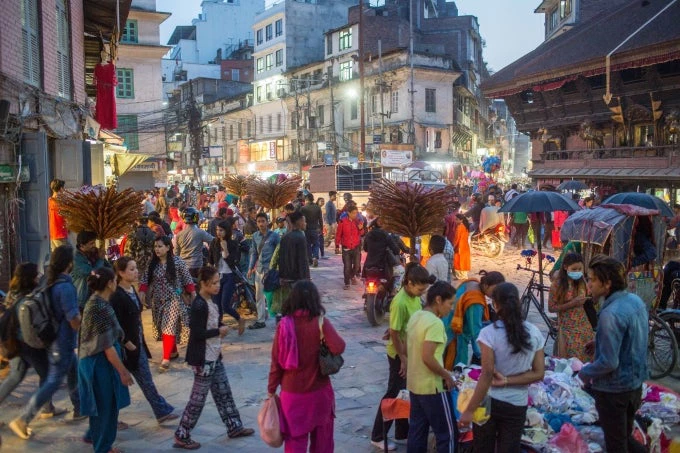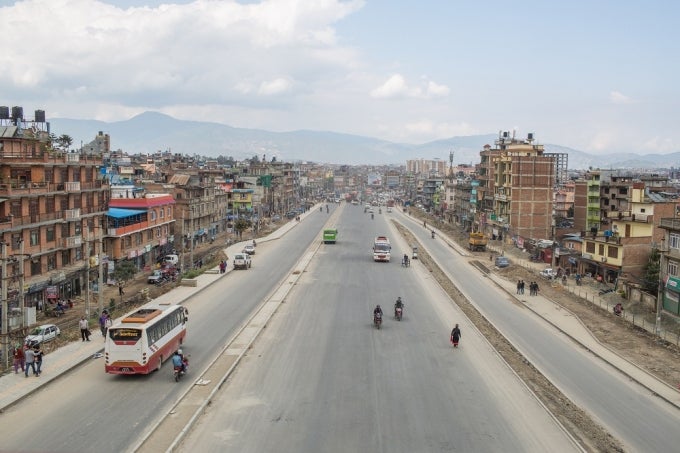
Nepal is on the brink of a new era. Four years ago this April, the powerful Gorkha earthquake devasted parts of Nepal and shook Kathmandu to the core.
Today, Nepal is in many ways emerging from that disaster as a new country : It is young, with more than 40 percent of Nepalis in the 16-40 age group. It is ambitious, with plans for new highways, new mass transit infrastructure, new airports, more trade, more energy, and growth.
And it is resilient. Last November, I watched people literally building back their lives from the ruins in Ramechhap, one of the earthquake’s hardest-hit districts . Much has been said about the strength of the Nepali people. I’m humbled to have witnessed it firsthand.
With each visit to Kathmandu, I’m increasingly impressed by the dynamism of the city and the aspirations of Nepal’s young people . They are eager for education, for opportunity. They shouldn’t have to leave Nepal to get it.
As investors gather for the Nepal Investment Summit, this is the perfect time for Nepal to send a message to the world -- that Nepal is back on its feet and looking ahead to a more prosperous future .
With a stable government and an ambitious economic plan, Nepal is, for the first time in decades, in a position to dream big and to carry out a long-term vision that includes more and better services and opportunities for people.
Things are moving in the right direction. Extreme poverty is expected to decline from 15 percent in 2010 to a 10 percent in 2019, based on a poverty line of $1.90 a day. Economic growth in the last three years has been robust .
The goal of becoming a middle-income country by 2030 -- in just 11 years – is possible.

But Nepal will have to grow fast enough to achieve that goal -- by some estimates by as much as 8 percent a year – to further reduce poverty and boost growth. This will require enormous levels of resources and investment. Infrastructure investment alone will need to be around 12 percent of GDP or more per annum -- roughly four times the current levels.
What will it take to get there?
First, Nepal needs to expand its sources of finance. Nepal needs more financing than the government and Nepal’s development partners such as the World Bank Group can provide.
Nepal also needs the technology and know-how that comes with investment and a vibrant private sector to realize the country’s vast potential . This will require opening up as many sectors as possible – particularly sectors where the injection of technical and managerial know-how from across the world has helped so many countries increase their productivity.
And Nepal needs to create the kind of conditions that enable the private sector and investors – whether foreign or domestic – to operate efficiently and effectively, to grow, and to see a profit.
This means refusing to allow critical projects to languish. It means easing rules for investors and businesses, to accelerate development that makes a difference in people’s lives. And it means creating facts on the ground whereby investors themselves will showcase the opportunities in Nepal to other investors.
It also means improving governance and ensuring transparency and accountability in implementing public investment projects and facilitating private ones. Nepal's new and longer political horizon gives it a critical window of opportunity to focus on building strong institutions .
These changes will then become reflected in Nepal’s business climate and improve its rankings in several indicators measured by our Doing Business report -- including dealing with the process to get a construction permit (currently 157 out of 190 economies), enforcing contracts (153); paying taxes (146), getting electricity (133), and starting a business (109), and raising its overall ranking of 105.44.
In addition to infrastructure investments, key reforms will be needed to strengthen and update the legal and regulatory framework for public-private partnerships (PPPs), one-stop investor services, and e-government services for citizens.
Making it easier to operate a business would enable the private sector to generate new sources of growth and revitalize existing sources of growth in sectors with high potential for job creation, such as tourism. Greater private sector participation could also raise the productivity of key sectors , such as transportation, energy, and IT connectivity, reduce the cost of doing business, and strengthen Nepal’s human capital – the skills, knowledge, and experience of its people.
In bringing together development partners and investors at the Summit, the government has recognized the critical need to leverage private investment and global knowledge to make progress.
The World Bank Group and other development partners support this effort to demonstrate to the world that this is the place and the time to invest in Nepal and its future .
Nepal is still in many ways a development frontier. Highways, airports, power plants, digital infrastructure, and rapid transit systems will not be built overnight.
Change is never a finite process, and it’s not without setbacks. But we are confident that with political commitment and leadership, Nepal will be able to achieve its development goals .
This piece was first published by the Kathmandu Post March 28, 2019.


Join the Conversation